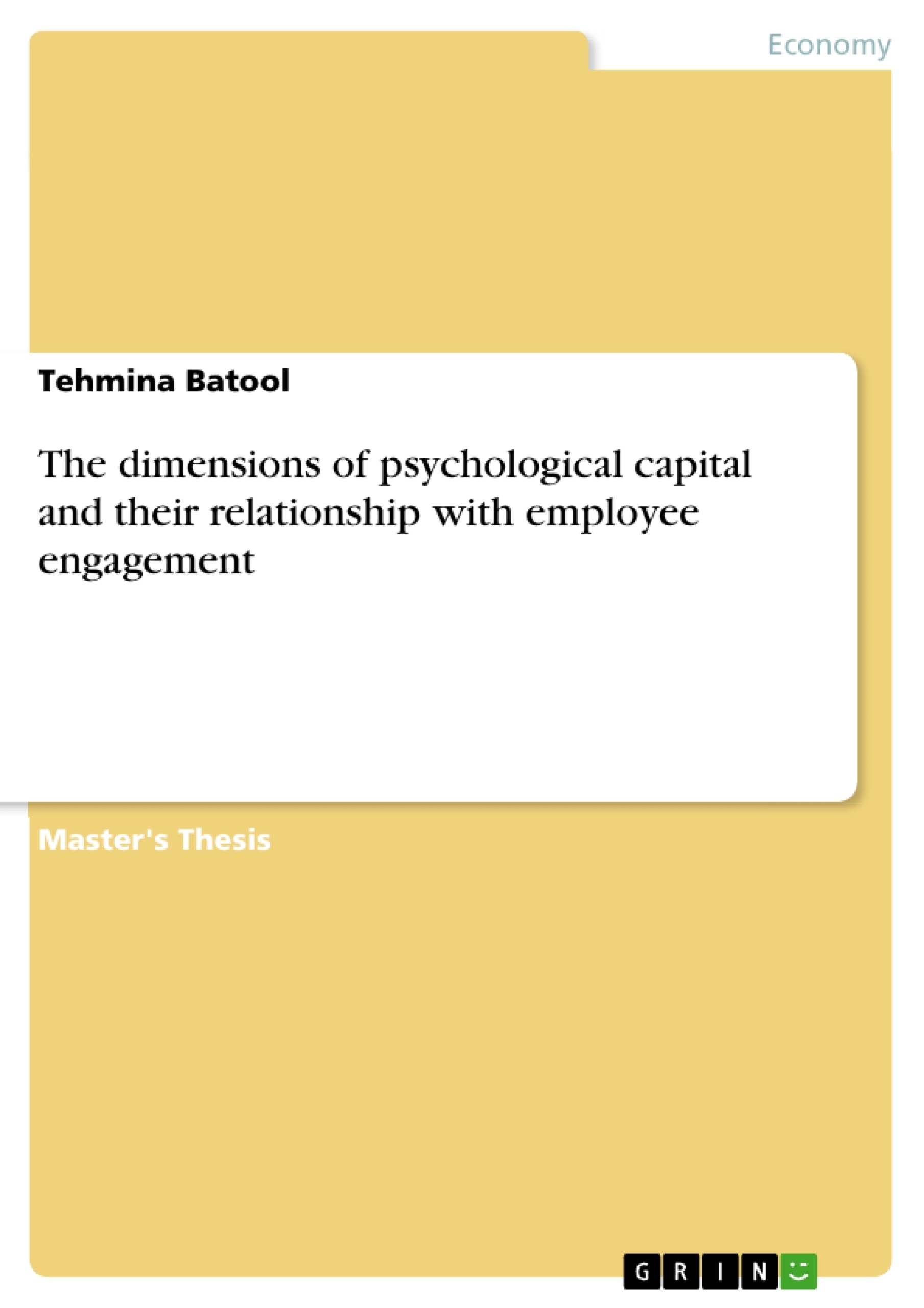Today’s business environment is facing the challenges and problems to achieve effective performance by employees. The core construct of psychological capital or PsyCap (involving Hope, Self-efficacy, Optimism and Resilience) is associated with various employees attitudinal or performance effects. Therefore, the objective of this study is to investigate the influence of the dimensions of psychological capital (hope, optimism, self-efficacy and resilience) on employee engagement. The data is collected from 171 employees engaged in the Commercial Banks of Lahore through questionnaires. Data is analyzed with the help of Statistical Software SPSS 16. The correlation, regression analysis, histograms and descriptive statistics are analyzed. Self-efficacy, hope, optimism and resilience have positive and significant relationship with employee engagement. The conclusion, discussion, limitations are also included.
Inhaltsverzeichnis (Table of Contents)
- Introduction
- Literature Review
- Methodology
- Analysis and Results
- Discussion
Zielsetzung und Themenschwerpunkte (Objectives and Key Themes)
This research delves into the concept of Psychological Capital (PsyCap) and its impact on organizational behavior. The primary objective is to understand the four components of PsyCap – self-efficacy, hope, optimism, and resilience – and their role in promoting individual and organizational performance.
- The development and application of Psychological Capital in organizational settings.
- The relationship between PsyCap and employee performance and well-being.
- The impact of PsyCap on organizational change and positive organizational behavior.
- The importance of fostering PsyCap in employees to enhance motivation, engagement, and resilience.
- The practical implications of PsyCap for organizations and individuals.
Zusammenfassung der Kapitel (Chapter Summaries)
- Introduction: This chapter lays the foundation for the research by introducing the concept of positive psychology and its evolution into positive organizational behavior and scholarship. It defines Psychological Capital (PsyCap) as a key construct in this field, highlighting its four primary components: self-efficacy, hope, optimism, and resilience.
- Literature Review: This chapter delves into the existing literature on Psychological Capital, examining the theoretical underpinnings and empirical research related to each of the four components. It discusses the relationship between PsyCap and various organizational outcomes, including employee performance, well-being, and organizational change.
- Methodology: This chapter outlines the research design, data collection methods, and analytical techniques employed in the study. It provides a detailed description of the population and sample, the variables measured, and the statistical procedures used to analyze the data.
- Analysis and Results: This chapter presents the findings of the research, analyzing the relationships between PsyCap components and various organizational outcomes. It explores the significance of the findings and discusses their implications for theory and practice.
Schlüsselwörter (Keywords)
Psychological Capital, positive organizational behavior, self-efficacy, hope, optimism, resilience, organizational performance, employee well-being, organizational change, positive psychology.
- Citar trabajo
- Tehmina Batool (Autor), 2012, The dimensions of psychological capital and their relationship with employee engagement, Múnich, GRIN Verlag, https://www.grin.com/document/274261



